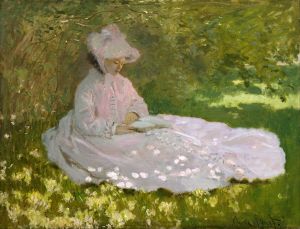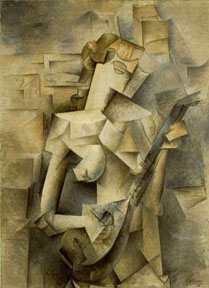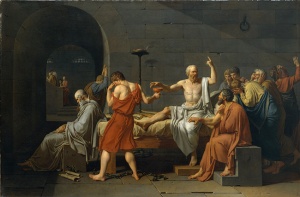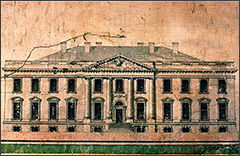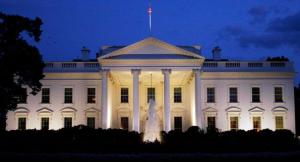Impressionism
I chose to study these two types of art because they are so completely opposing. The soft brush strokes, and dabbing of the Impressionist art works are the polar opposite of the sharp edges and clearly delineated lines of Cubism and the difference in subject matter is also extreme. I love when you have two opposing ideals and both have a following, it creates such interest in the pieces. Where Impressionist artists created a mood, a sense of emotion with their pieces, Cubists focused on the logical exploration of space and structure in their paintings, the focus was not so much on what was happening in the picture but on how it was being presented to you. So I will start with two of Claude Monet’s paintings, because I love that some of his works focused on his wife Camille. Actually quite a few of his works involved her but one of the most well known is Woman In a Garden painted in 1867. Monet created a large portion of his art in Paris, a fertile ground for the imagination I understand, and this work was created there as well.
Woman In a Garden 1867
As you can see it is a very good representation of Impressionist art because the choice of colors, almost dream like as well as the soft brush strokes, and slightly rounded dabs are very typical of the style. I love this piece because I can so clearly imagine myself standing behind this woman, relaxed and at peace in this tranquil setting. Monet was quite in love with his wife Camille by all accounts and I think you can see that reflected in how he paints her, almost angelic with her white dress and stately presence.
The next piece by Monet I chose is called Springtime and was painted in 1872 also in Paris. This again focuses on a woman, and it is incredibly beautiful. The piece is not known to have been of Camille but I think it’s a strong possibility. Camille died in 1876 of tuberculosis and I’m sure it must have been a comfort to Monet to have so many pieces to remember her by.
Springtime 1872
If I had to imagine walking through a French garden, looking for a young lady, this is what I would picture. The piece is so incredibly still, like she’s frozen in time there. I love Monet’s ability to capture a perfect moment, and take you there, make you feel what he must have felt looking at his subject. Monet said himself he was incredibly drawn to color and that he spent vast amounts of time on shading and perfecting his technique. Monet passed away in 1926 and it is still possible to tour his home and gardens in Giverny.
Cubism
Cubism is very different from Impressionism in that artists focused on this style of painting were not so concerned with realistic shapes and sizes, and often their paintings looked almost flat. I chose Pablo Picasso and his work Girl With a Mandolin because I clearly enjoy paintings featuring women. I also think having the same subject matter will help illustrate the differences in style quite clearly. Picasso painted this piece in 1910 when he was going through his Synthetic Cubism period.
Girl With a Mandolin 1910
The subject may be a woman but Picasso has chosen to totally deconstruct the image and rebuild it, forcing the viewer to think about what they are looking at and really examine their perspective. Picasso wanted art to be an experience, a change in our view, and something we thought critically about. This attitude greatly influenced art to come for years.
My last piece is more current, meaning it’s from this century and it is by Thomas C. Fedro and of course features a woman! In fact it is called Princess For a Day and was painted in 2006. This piece has all the angularity, bold lines, and change in perspective associated with Cubism but features more color which is something I love!
Princess For a Day 2006
I saw this painting and just fell in love. I felt like I was looking at the Lady of the Lake or another medieval figure but the way Fedro painted the piece feels so modern I’d be happy with it in my living room! You can see how vividly his portrayal captures this princess and she has an almost peaceful expression on her face as well.
All of the artists featured in my comparisons were male, and all of them chose to paint women, and I believe they did them justice. From the Impressionist serenity to the bold Cubism, I’d be happy to be painted by any one of them, or own one of their works.
Sources
http://en.wikipedia.org/wiki/Claude_Monet
http://robinurton.com/history/cubism.htm
http://www.ebsqart.com/Art-Galleries/Contemporary-Cubism/43/Princess-For-a-Day-Cubist-15/321818/

